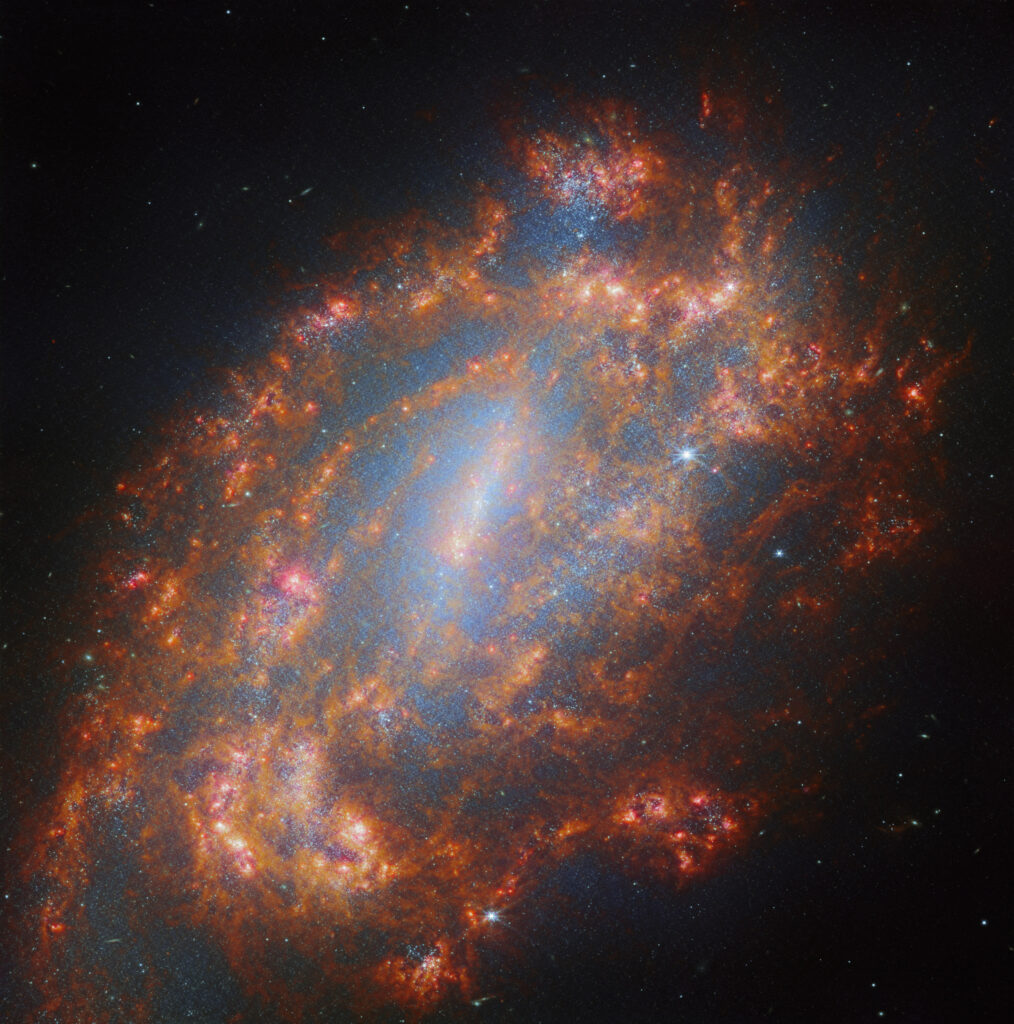Astronomers working with the James Webb Telescope (JWST) have published a spectacular new image. It shows the galaxy NGC 1559.

In the terrestrial sky, NGC 1559 stands next to the Large Magellanic Cloud (LMC), a satellite galaxy of our Milky Way. But this is just a trick of the eye. The LMC is located 160 thousand light-years from Earth and is gradually approaching us. The distance to NGC 1559 is greater and is 35 million light-years. At the same time, every second it increases by another 1300 km.
In fact, NGC 1559 is a lone galaxy that has no close neighbors at all and is not part of any clusters. But despite its loneliness, NGC 1559 is still a very interesting object.
Like our Milky Way, NGC 1559 is classified as a spiral galaxy with a bar. The JWST image shows its swirling spiral arms, strewn with many regions of active star formation, as well as the center, surrounded by clouds of hot gas. Also, supernovae flare up quite often in NGC 1559. Over the past 40 years, such events have occurred in it four times.
Due to its ability to see in the infrared range, JWST is able to penetrate the dust curtain and record the radiation of newborn luminaries NGC 1559, hidden behind a huge amount of dust. That’s why it became a target for JWST. Observations of the galaxy were carried out as part of a project that also involved Hubble, the ALMA radio telescope complex and other ground-based observatories. Its main task is to collect data on how stars are born, live and die in galaxies throughout the universe.
According to https://esawebb.org
Follow us on Twitter to get the most interesting space news in time
https://twitter.comne/ust_magazine


